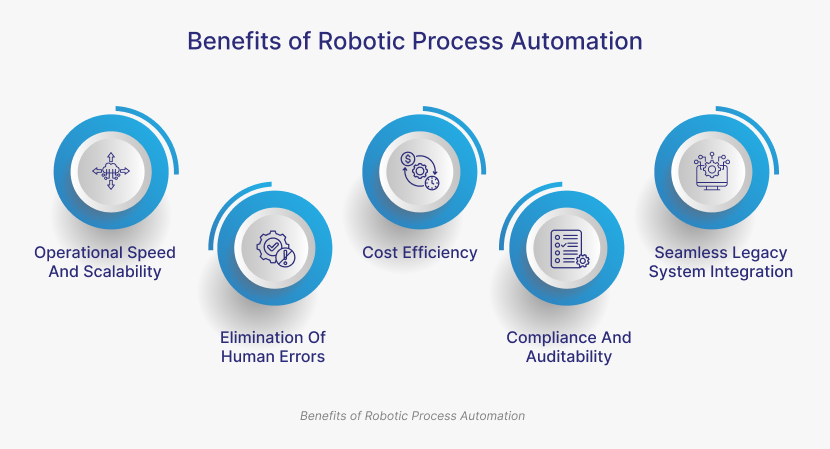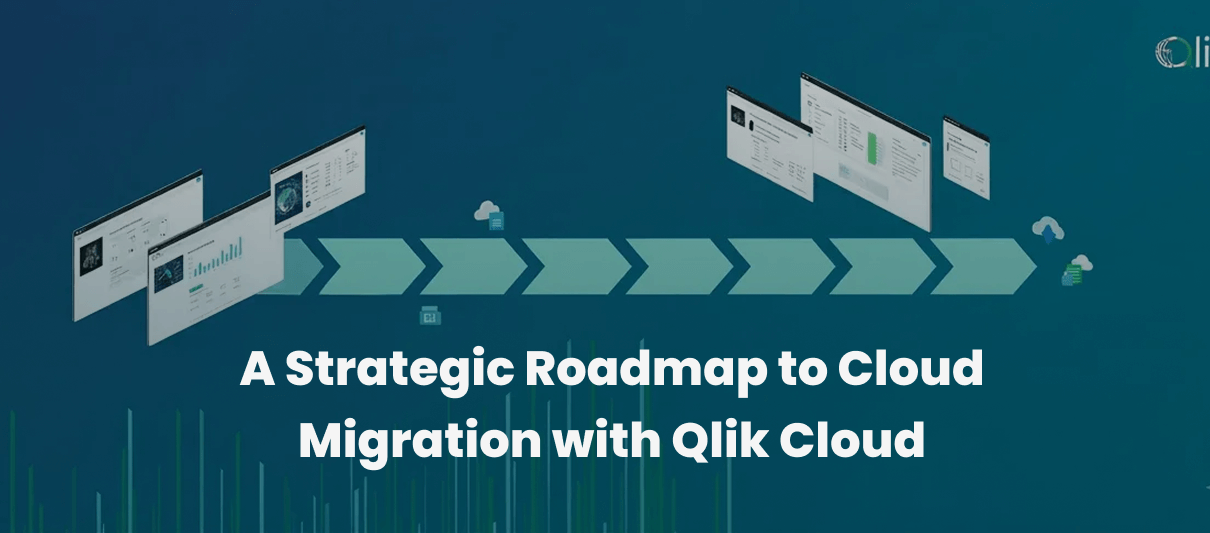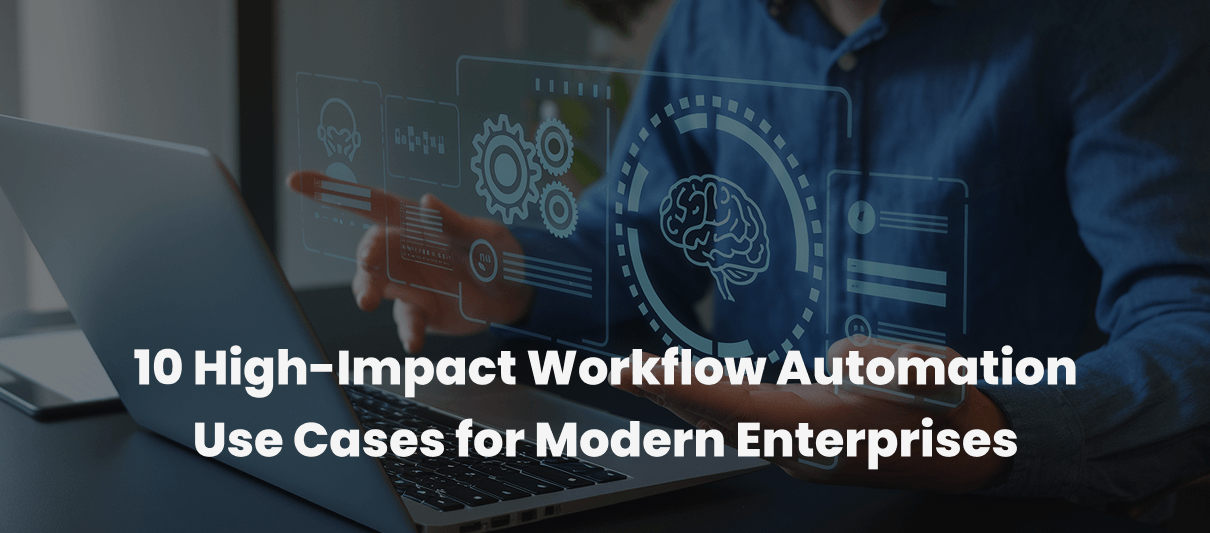Robotic Process Automation Explained: Benefits, Use Cases, and Implementation
Prelude
Vision 2030 contributes to the sudden surge in digitalisation and modernisation of enterprise operations in the Kingdom of Saudi Arabia. Organisations began to redirect their focus to more efficient and advanced technologies, such as Robotic Process Automation (RPA), to elevate their technological game.
This blog explains Robotic Process Automation, its benefits, use cases, and best practices for implementation.
RPA facilitates faster workflows, lower error rates, and process visibility without changing the existing systems.
Eager to unlock a streamlined workflow?
Reach out to SquareOne Today!Robotics Process Automation (RPA): A Brief Breakdown
Robotic Process Automation (RPA) is robotic software that acts as a digital assistant to the user, performing rule-based and structured tasks while mimicking human interaction with systems. For instance, RPA does the data entry, app operations, reads files, sends emails, copies and pastes data and so forth. These bots follow step-by-step instructions to complete repetitive tasks across applications.
Based on the RPA’s dependency on human users, it can be categorised into two major types:
Attended Bots:
The bot depends on the user’s direction and assists the user in completing the task. Mostly used in front office operations, for instance, customer service.
Unattended Bots:
As the term denotes, these autonomous bots can operate without any human intervention. Deployed on virtual machines or servers for back-office tasks, for instance, data entry and report generation.
In the KSA region, Most of the enterprises have shifted to RPA as it stands as a smarter option compared to other automation due to its guaranteed ROI and efficient workflows.
Benefits of Robotic Process Automation
RPA facilitates faster workflows, lower error rates, and process visibility without changing the existing systems.

Operational Speed and Scalability
RPA bots work around the clock, executing tasks at top speed without any frequent or mandatory breaks. Processes like invoice verification, employee onboarding, or transaction reconciliation that take hours manually can be completed in seconds. This reduces backlogs and improves SLA (Service Level Agreement) performance across departments.
Elimination of Human Errors
Bots follow a strict set of predefined instructions. This removes manual mistakes from critical workflows like tax calculations, bank reconciliations, or form submissions, ensuring consistency and accuracy at scale. RPA reduces costly mistakes and reduces the time used to correct the mistakes or even evades escalations if the situation is severe.
Cost Efficiency
By automating high-volume, low-complexity tasks, organisations reduce Full-Time Equivalent (FTE) workload and shift human effort to higher-value activities. RPA’s high availability mitigates organisations from downtime, bottlenecks, and the need for approvals from different departments, which increases the business’s ROI.
Compliance and Auditability
Each bot action is logged in detail, which makes compliance effortless. For Saudi businesses governed by SAMA, ZATCA, or NCA, this ensures compliance with cybersecurity and data handling regulations. Bots don’t deviate from process, making them a reliable component of audit frameworks.
Seamless Legacy System Integration
RPA integrates seamlessly with legacy systems by mimicking user actions at the interface level, requiring no backend changes. It works across outdated applications and modern platforms alike, reducing the need for costly upgrades. Technologies like screen scraping, OCR, and API connectors help bots handle data across multiple systems. This enables businesses to automate processes while maintaining their existing IT infrastructure.
Key Operational Applications
1. Data Entry & Migration
RPA bots can extract, validate, and input large volumes of data into CRMs, ERPs, or databases with zero manual effort. They eliminate data duplication and human errors during form-filling, customer onboarding, or legacy-to-cloud transfers.
Industries:
- Healthcare
- Telecom
- Banking
- Government
- Logistics
2. Report Generation & Compliance Filing
RPA gathers structured data from multiple sources and compiles it into formatted reports in real time. It ensures compliance by auto-filling regulatory documents, preparing audit trails, and scheduling submissions.
Industries:
- BFSI
- Government
- Oil and Gas
- Manufacturing
3. Invoice Processing & Reconciliation
Bots read invoices using OCR, match them with purchase orders, and update finance systems for timely vendor payments. They flag mismatches, reconcile discrepancies, and generate automated alerts for pending approvals.
Industries:
- Retail
- E-commerce
- Manufacturing
- Hospitality
4. Scheduling & Notifications
RPA tools handle real-time appointment booking, resource allocation, and automated notifications via email or SMS. They sync calendars, reduce no-shows, and ensure task reminders are triggered without manual input.
Industries:
- Healthcare
- Public Services
- Customer Support
- Telecom
5. Document Verification & Onboarding
RPA validates scanned documents such as passports, licenses, or insurance cards using AI/OCR tools. It checks data accuracy, cross-verifies records, and automates steps in employee/vendor onboarding.
Industries and departments:
- Banking
- Government
- Oil and Gas
- Human Resources
6. Order Management and Fulfilment
Bots track order status, send confirmation emails, and auto-update stock levels across platforms. They support end-to-end fulfilment by handling cancellations, returns, and invoice updates.
Industries and departments:
- Retail
- E-commerce
- Wholesale
- Logistics
7. System Integration & Data Syncing
RPA bridges modern applications with legacy systems by simulating user actions or invoking backend APIs. This enables real-time data syncing without re-engineering older infrastructure.
Industries:
- Government
- Telecom
- Utilities
- Manufacturing
8. Claims Processing
Automates reading of insurance forms, cross-checks codes, and routes validated claims to approval queues. It minimises delays in reimbursement by flagging incomplete or mismatched entries early in the process.
Industries:
- Healthcare
- Insurance
- Human Resources (for internal benefits handling)
Implementation of RPA: A Technical Framework
Successful RPA adoption requires a structured, cross-functional approach for more precise and rule-based functionality. Here’s a step-by-step implementation path relevant for KSA organisations.
1. Process Identification and Assessment
Start by selecting high-volume, rule-based, repetitive processes with minimal decision points. Use process mining tools or workshops with SMEs to identify gaps and automation potential.
2. Feasibility and ROI Analysis
Start by weighing setup and maintenance costs against the time and effort saved through automation. Factor in compliance, especially with local cybersecurity rules like the NCA’s Essential Controls. This helps ensure your investment delivers real value without hidden risks.
3. Tool Selection
Common and most sought-after Robotic Automation tools in the KSA market include:
- Hyland – strong in content management and automation setups.
- Automation Anywhere – preferred for enterprise-scale workloads.
- Microsoft Power Automate – integrates well with the Microsoft ecosystem.
Choose a platform based on deployment type (cloud/on-prem), Arabic UI support, API availability, and orchestration capability.
4. Bot Development
Build workflows using drag-and-drop editors or script-based logic. Bots typically:
- Interact with systems via UI selectors or APIs
- Read from PDFs, spreadsheets, or databases.
- Use OCR for scanned documents.
- Apply business rules using conditions, loops, and variables.
Choose a platform based on deployment type (cloud/on-prem), Arabic UI support, API availability, and orchestration capability.
5. Testing and Quality Assurance
Enterprises are expected to test each bot for:
- Accuracy and output validation
- Exception scenarios (missing data, timeouts, UI changes)
- Security (data masking, encrypted credentials)
6. Deployment and Orchestration
Manage all your RPA bots from a central dashboard—schedule tasks, assign bots to the right servers, and track performance in real time.
Built-in access controls and detailed audit logs help maintain visibility, security, and compliance throughout operations.
7. Monitoring, Maintenance, and Governance
Set up dashboards for bot performance, error rates, and transaction volumes. Establish a change management protocol to update bots as underlying systems evolve. All logs should align with SAMA (Saudi Arabian Monetary Authority) and NCA (National Cybersecurity Authority) audit requirements.
For Further Information:
RPA Journey: 4 Stages To Successful RPA Implementation
Only expert RPA providers can comprehend business needs and align the solution to provide a suitable solution with the expected automation functions.
SquareOne: Your Automation Partner
SquareOne’s technological impact in the KSA region has proven its seasoned expertise and solution-centric products. Through their strategic partnership with industry leaders, SquareOne offers robust and customised Robotic Process Automation Services for every enterprise’s needs.
Final Thoughts
A common misconception about Robotic Process Automation is that it’s only useful for automation. It also excels in scaling digital maturity without disrupting core infrastructure. For enterprises and public sector organisations in Saudi Arabia, RPA enables measurable improvements in efficiency, compliance, and cost control. With the right process selection, governance, and tooling, RPA can be a powerful enabler of Vision 2030’s transformation goals.
















